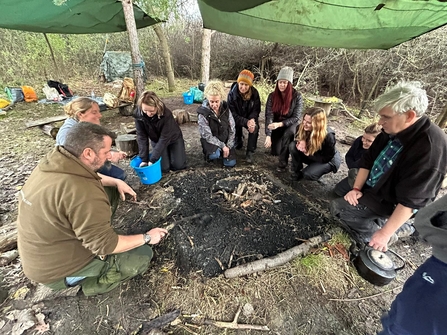Before becoming an ambassador for Essex Wildlife Trust, I volunteered regularly at Belfairs Nature Discovery Centre assisting with Forest School sessions for children from home schoolers to young carers. I found myself thinking, ‘I can’t believe you can get paid for this!’ It was fun for both the children and the adults in charge. These experiences led me to completing my Level 3 Forest School Training at the beautiful Abbotts Hall Farm last September.
Every day of the course was packed with invaluable advice, practical skills and teamwork. We learnt craft skills like willow weaving, used tools, tied knots, learnt different methods of fire lighting, as well as how to identify trees and plants (plus much more!). There were even dedicated skills days which give you the chance to practise your practical outdoors skills over and over until you feel confident leading a forest school session.


